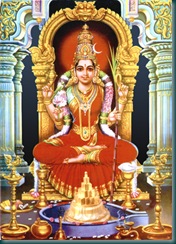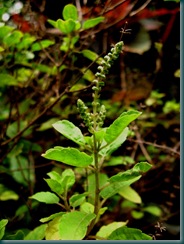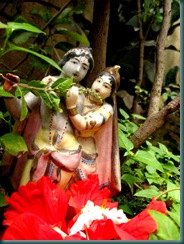Christmas looms.
You’re thinking, dark clouds loom, last date for filing IT returns looms, but surely a season of peace and goodwill cannot loom?
Well, it does
And the challenge iss to be jolly yet meaningful, to rise above the trite and the maudlin, to get the reader to stop right there in the middle of stuffing that Christmas stocking and mutter, “Now bless my little mistletoes, who’d have thought of that!”
So, I desultorily began to trawl Youtube in search for…well, to tell you the truth, I didn’t really know what. Amy Winehouse’s version of Rudolf the Red-Nosed Reindeer maybe? Osama bin Laden’s Christmas day message?
Which is when I stumbled on a recording of the late Walter Cronkite hosting the annual Christmas concert of the Mormon Tabernacle Choir. And almost instantly, I was riveted by Cronkite’s narration of an extraordinary event that took place nearly one hundred Christmases ago…
December 24th, 1914.
The war in Europe was five months old, already far too old for one that had been expected to last just a few weeks. What had started as a glorious cavalry charge fired by patriotic fervour had become a sullen, savage battle fought from trenches that would ultimately stretch for 440 miles all the way from the English Channel to the Swiss frontier. Trenches six to eight feet deep that the cold - often four degrees below zero - and the rain transformed into freezing, waterlogged hellholes as winter set in. As one soldier wrote home, “bullets are a secondary consideration to the cold, rain and mud.” And decaying bodies remained unburied because there was no let up in the incessant artillery bombardment for the living to claim their dead.
But that night, the rain had stopped and as Private Albert Moren of the Second Queens Regiment in a trench somewhere near the French village of La Chapelle d'Armentières recalled, “It was a beautiful moonlit night, frost on the ground, white almost everywhere.” And with the rain, the guns also seemed to have fallen silent.
It was an unaccustomed, unnerving silence, eerie in its stillness.
Suddenly…
“Grave and tender voices rose out of the mist….”
The song they sang was a beloved, familiar one – “Silent Night, Holy Night”. Except that the words were in German because the singing was coming from the German trenches! When Lovell, a British soldier in the 3rd Rifle Brigade, looked out from the top of his trench, he could see “a sight which I shall remember to my dying day. Right along the whole of their (German) line were hung paper lanterns and illuminations of every description, many of them in such positions as to suggest that they were hung upon Christmas trees.”
And as the singing continued, what followed is one of the strangest and the most beautiful events in the history of war…and peace.
First, cautious heads soon began popping up on both sides; in a few places, placards with Christmas greetings in German and invitations to impromtu concerts written on them. Then voices began to call out to each other, using derogatory nicknames like “Fritz” and “Tommy“, but no one minded. Finally, someone summoned up enough courage to stand up and wave. And within minutes, unarmed soldiers swarmed out of the trenches from both sides on to what was called No Man’s Land, a hideous, shell-torn stretch of land, sometimes just 30 yards wide, that separated the trenches of the two armies. And where till now, it was peopled by only the “unburiable bodies” of the dead, who lay decaying in the frozen mud.
It was an incredible sight. Men who, just a few hours ago were killing each other now shook hands, swapped salutes and cigarettes and gifts; barrels of German beer, plum pudding, uniform buttons and badges, even helmets, tins of jam and beef bully. They showed each other pictures of wives and sweethearts and families that they had left behind. They even visited each other’s trenches and shared their Christmas rations.
There was laughter and singing and even more incredibly, in a few places, there were free haircuts. And soccer matches.
And in the midst of all this, they gathered for a more sombre task. As the 23rd Psalm was read in German and in English and as someone played the Last Post, they buried each other’s dead in massive common graves, giving the poor, frozen, rotting remains of their fallen comrades a hero’s burial.
Suddenly, they were all just men inextricably trapped together in the same terrible predicament of war.
The truce lasted through the night and all through Christmas Day. When Boxing Day dawned, everyone knew that it had to end. But on both sides, they were loath to pick up their guns again and in one unit of the 107th Saxon regiment of the German army, mutiny broke out, the men refusing to resume the war.
But it was a brief rebellion.
At long last, as Captain J C Dunn, Medical Officer in the Royal Welch Fusiliers, recorded in his diary, “At 8.30 I fired three shots in the air and put up a flag with "Merry Christmas" on it, and I climbed on the parapet. He (the Germans) put up a sheet with "Thank you" on it and the German captain appeared on the parapet. We both bowed and saluted and got down into our respective trenches, and he fired two shots in the air, and the war was on again.”
It is estimated that about 100,000 men - including as much as half the British troops - took part in what is now called “the Christmas Truce”. It was an event so extraordinary that if it weren’t for the hundreds of letters that poured back home and the entries in diaries and journals of those who were there, it would have been dismissed as the deranged imaginings of minds all but destroyed by the savagery of war.
But it did happen.
We may well sneer and say, “and fat lot of good it did”, because the war continued for four more devastating years at the end of which, half of all the soldiers who fought in it were either be dead or wounded. It was supposed to be the war to end all wars, but it failed miserably in its purpose because twenty-one years later, the world was at war again, this time adding Hiroshima, Nagasaki and the decimation of six million Jews in concentration camps to its enviable record of causalities. Then came the wars in Korea, Vietnam and Afghanistan; the chronic epidemic of wars that regularly break out in Africa and the Middle East and our own wars with China and Pakistan…only to name a few.
But consider this.
Amongst the thousands of British soldiers who took part in that truce was Murdoch Mackenzie Wood, a young Scottish lawyer. Sixteen years later, speaking as a Liberal MP in the House of Commons, he said this about what happened.
"A great number of people think we did something that was degrading… The fact is that we did it, and I then came to the conclusion that I have held very firmly ever since, that if we had been left to ourselves there would never have been another shot fired… It was only the fact that we were being controlled by others that made it necessary for us to start trying to shoot one another again..."
So, maybe that is the message from the Spirit of that Christmas Past, so many, many years ago. That, when left to us, to ordinary folk, war will always an impossible thing.
Some of the men who took part in the Christmas Truce tried to make sure that we would never forget that. In 1999, a group of them went back to the site of the truce in Ypres in Belgium and put up a large wooden cross as a memorial. On it was engraved this message
“1914
The Khaki Chum's Christmas Truce
1999
85 Years
Lest We Forget”
*******

















